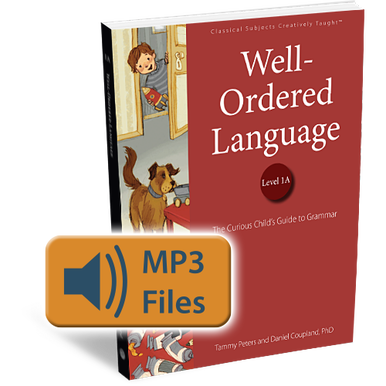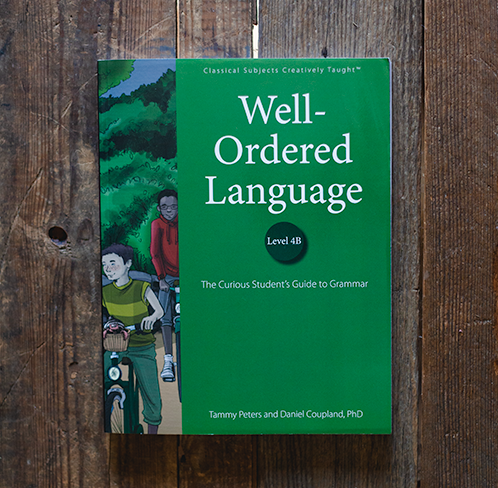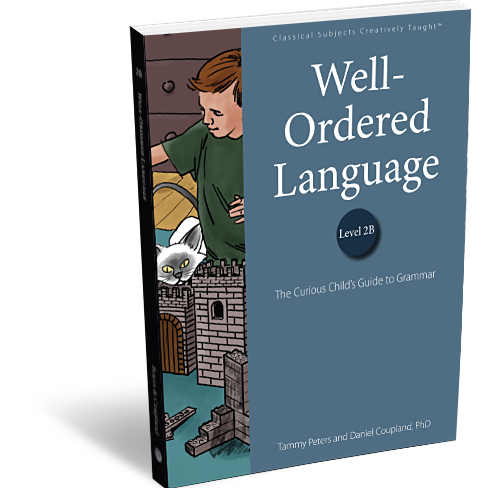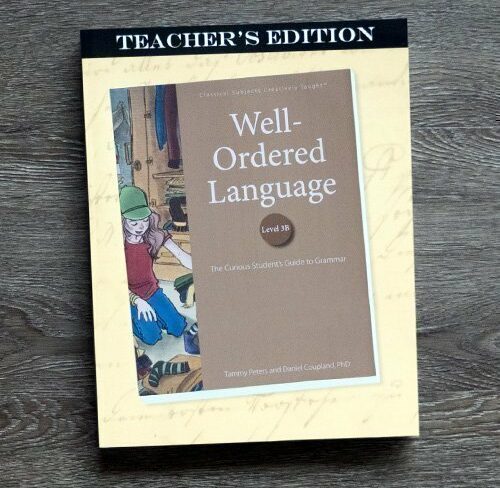A one-semester course for grades 4 or 5 and up
Well-Ordered Language Level 2 is the second part in a four-level series that demonstrates that grammar is an engaging study that appeals to children’s natural curiosity about words and language. It presents grammar in a clear, orderly way, while simultaneously seeking to cultivate children’s wonder of language with instruction in the context of narrative and language, attractive illustrations, and samples taken from classic children’s literature and poetry. Through Well-Ordered Language’s unique, creative, and orderly method of analyzing the grammatical functions of the parts of speech, students will find the mastery of grammar achievable, meaningful, and delightful.
The carefully crafted pedagogy of this book helps students learn the mechanics of grammar while they also see the power of language unfolding before them as they learn to gather and arrange words to express their thoughts clearly and accurately. Students will not merely be able to identify the parts of a sentence, but also will understand how words behave in a sentence. This book is designed so that teachers and students actively engage with each other and with the concepts in each lesson by means of reading, writing, speaking, and listening. Learning is reinforced by the singing of lively chants and songs that correspond to each chapter.
The previous level, Well-Ordered Language Level 1, helped students to master the eight parts of speech, along with object pronouns, prepositional and adverbial phrases, compound subjects, compound verbs, and compound objects. Any student who mastered these concepts should be prepared for Well-Ordered Language Level 2. In Book 2A, students will review and strengthen skills learned in Level 1 and be introduced to several new concepts. Student using this text will also learn to diagram sentences, visualizing the grammatical relationships within sentences.
Well-Ordered Language Level 2A (WOL 2A) will introduce students to:
Four kinds of sentences (declarative, interrogatory, imperative, exclamatory) and principal elements
Adverbs
Adjectives
Predicate verbs and direct objects
Predicate nominatives
Predicate adjectives
Predicate review
Possessive nouns





